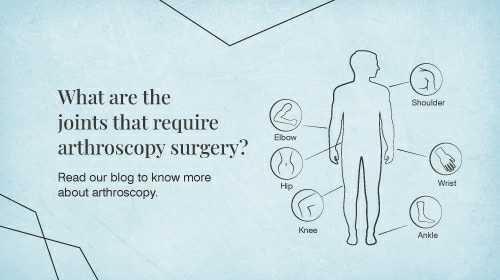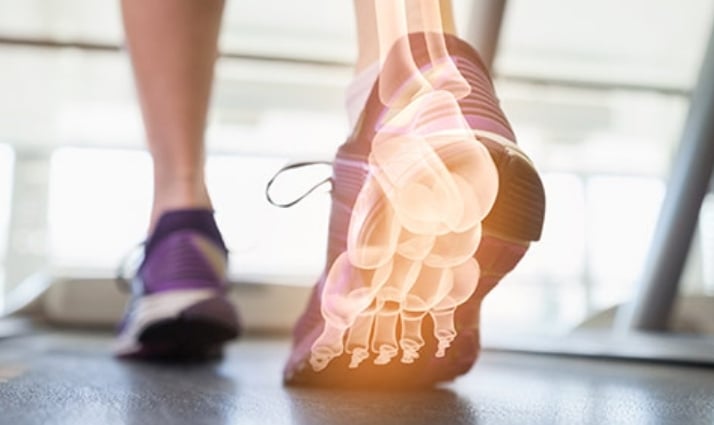What is Arthroscopy Surgery: Procedure, Conditions, and Recovery
March 18, 2025

Arthroscopy is a surgical procedure that doctors use to examine, diagnose, and treat problems related to the joints. You can have an arthroscopy on any joint. Most often, it’s done on the knee, shoulder, elbow, ankle, hip, or wrist. Arthroscopy Surgery is a minimally invasive surgery. Surgeons use special equipment to look inside the joint to diagnose and correct injured tissue. The process is done through small incisions and thus causes minimum discomfort, leading to quick healing.
Why Would You Need an Arthroscopy Surgery?
Arthroscopy surgery is done to treat joint injuries and diseases that cause inflammation or damage to joints. Knee arthroscopy surgery is the most common procedure. It is also used to treat shoulder, elbow, ankle, hip, and wrist problems. It is a common procedure done by ortho doctors to treat sports injuries and traumatic accidents.
Conditions that Most Often Require Arthroscopic Surgery?
Arthroscopic surgery is commonly performed to diagnose and treat various joint conditions caused by injuries, inflammation, or degenerative diseases.
Knee
- Meniscal tears
- Anterior / Posterior cruciate ligament tears with instability
- Medial/Lateral Collateral Ligament tears
- Cartilage defects (Wearing or injury of the cartilage cushion)
- Medial Patellofemoral ligament tear
- Septic arthritis/ Synovitis/ Loose bodies
Shoulder
- Recurrent dislocations/Instability
- Rotator cuff tears
- Impingement syndrome
- SLAP tear
- Frozen Shoulder
- Septic arthritis/ Synovitis/ Loose bodies
Hip
- Femoroacetabular Impingements
- Labral lesions
- Osteonecrosis
- Septic arthritis/ Synovitis/ Loose bodies
Elbow
- Tennis/Golfers Elbow
- Adhesiolysis for stiffness
- Septic arthritis/ Synovitis/ Loose bodies
Ankle
- Impingements
- OCD
- Arthrodesis for arthritis
- Instability
- Septic arthritis/ Synovitis/ Loose bodies
Wrist
- Carpal Tunnels syndrome
- Triangular fibrocartilage tear
- Septic arthritis/ Synovitis/ Loose bodies
How is Arthroscopy Surgery Done
Arthroscopy is a low-impact surgical technique used to identify and address joint problems. The process involves the following steps.
Pre-Surgery Preparation
You will be instructed to fast for several hours before the surgery if general anesthesia is scheduled. You may be advised to avoid specific medications, particularly blood thinners, to lower the risk of bleeding. The surgical team will insert an intravenous (IV) line into your hand or arm to deliver anesthesia and fluids throughout the procedure.
Administering Anesthesia
Depending on the joint being treated and the complexity of the procedure, the surgeon may use one of the following types of anesthesia:
- Local Anesthesia: Numb a small area around the joint while you remain awake.
- Regional Anesthesia: Numb a larger section of the body, such as the lower half, while you stay conscious.
- General Anesthesia: Puts you into a temporary sleep state for the duration of the surgery.
Incisions and Visualization
The surgeon makes small incisions (about the size of a buttonhole) near the affected joint. Through one of the incisions, a thin, flexible tube called an arthroscope is inserted. The arthroscope is equipped with a camera and a light source, which transmits real-time images of the joint to a monitor. This enables the surgeon to thoroughly inspect the joint.
Surgical Intervention
If any issues are detected, the surgeon may perform corrective procedures during the same session. The surgeon uses specialized instruments inserted through small incisions to trim, repair, or remove damaged tissue, ligaments, or cartilage. Sterile fluid may be injected to widen the joint space, enhancing visibility and maneuverability.
Closing the Incisions
After the procedure, the instruments are withdrawn, and the joint is rinsed with a sterile solution. The incisions are then closed with a few stitches or adhesive strips, and the area is covered with a sterile bandage.
Post-Surgery Care
After the surgery, you will be monitored for a few hours in a recovery area. You may be given pain relievers and anti-inflammatory medications. Ice packs and elevation are often recommended to reduce swelling. Depending on the joint treated, you may need to use crutches, slings, or braces for support during recovery.
How Long is the Recovery After Arthroscopic Surgery?
Recovery time is mostly quick. Immediately after the surgery, you will need Braces, splints or slings for support. There is less pain and stiffness when compared to open surgery and recovery is faster with little or no hospital stay. You will be prescribed antibiotics, blood thinners and painkillers to prevent infection and blood clots, and to manage pain.
You may be able to remove the surgical bandages a day after the surgery and replace them with small strips. In about 2 weeks, the surgeon will remove non-dissolvable stitches, if any. Apply ice for the first 24 hours to reduce swelling. If you’ve had an arthroscopy surgery on your knee, elevate the leg to reduce pain. Take pain medicines as prescribed, and do not drink alcohol.
How Soon Can I Get Back to Normal Activities After Arthroscopy Surgery?
Immediately after the surgery, you will be asked to refrain from certain strenuous activities based on which joint was treated. Typically, after arthroscopy surgery, you will be able to return to work within a few days of surgery. Joint recovery will take some weeks, and returning to compete normally will take a few months.
With suitable rehabilitation, you will be able to return to normal activities early. The patient should be able to bear weight on the knee while standing or walking immediately after surgery with a brace. They are expected to walk with crutches for 4-6 weeks after surgery. The patient should refrain from driving for at least 1 week after an arthroscopic knee operation until the swelling reduces and the knee motion improves.
Rehabilitation is intended to control pain and swelling, achieve maximum range of motion, and full load walking. If you have a joint problem and have been advised of surgery, contact the arthroscopic surgeons at Rela, the multispeciality Hospital, for quick relief through advanced arthroscopic procedures.










